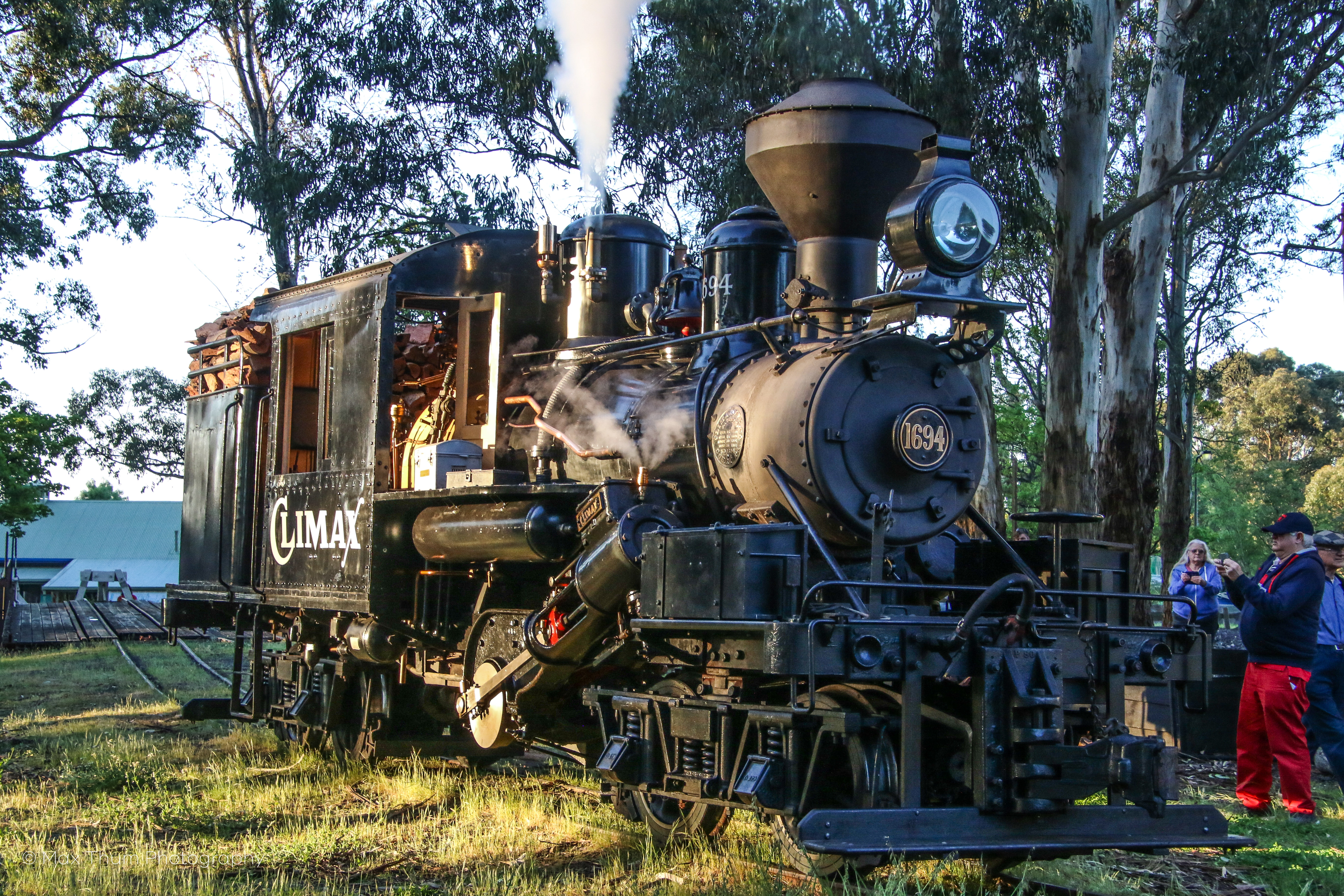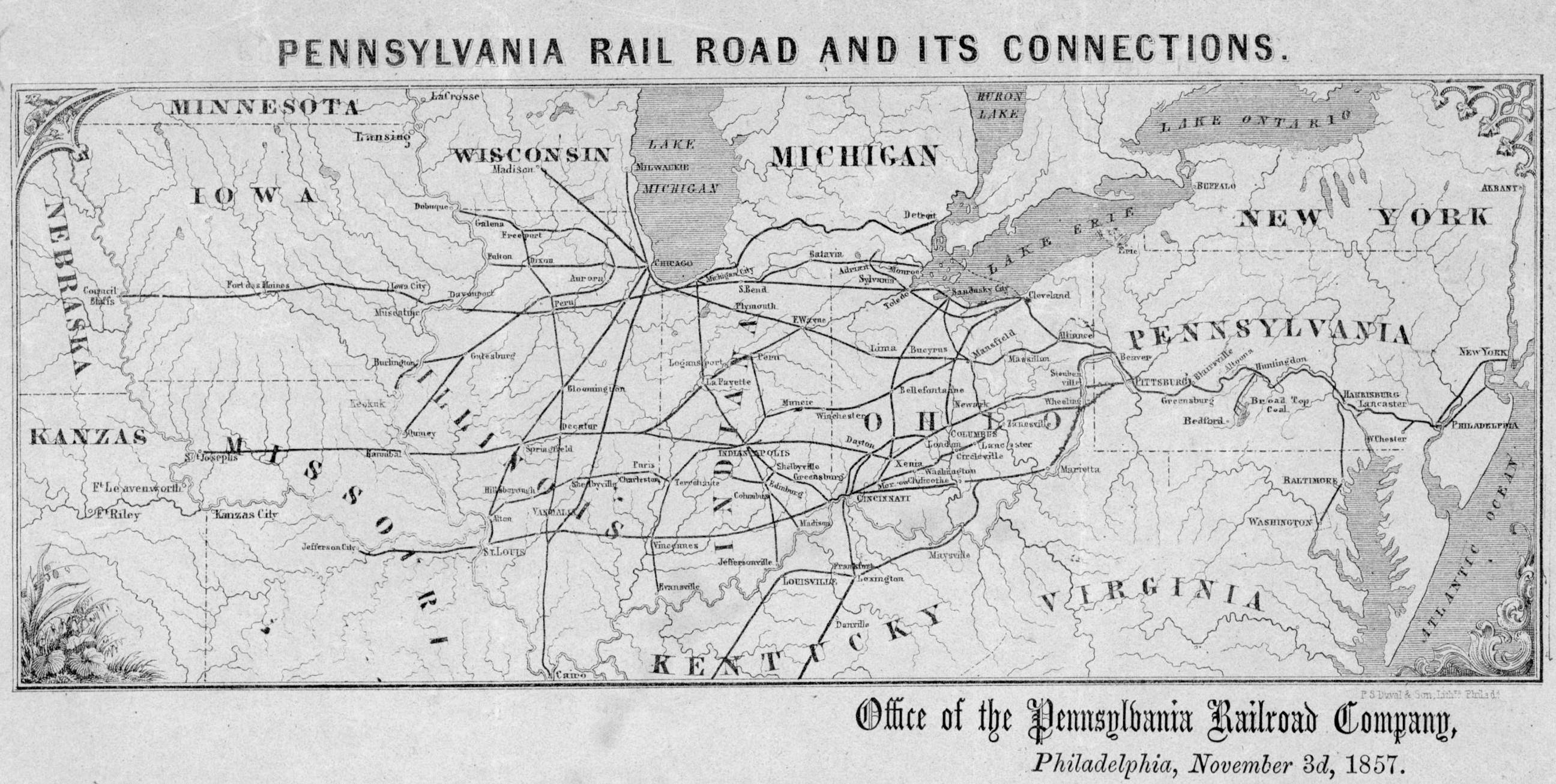|
East Waterford Lumber Company
The East Waterford Lumber Company was an early 20th-century company which leased and harvested timberland in Juniata and Perry County, Pennsylvania. Background The company was organized by Daniel Buck of Bellefonte, James Hockenberry of East Waterford, and a third partner, named Brown, about 1905. The company built a sawmill, two stave mills, and a lath mill in East Waterford. This town was served by the narrow gauge Tuscarora Valley Railroad, which provided an outlet for finished lumber from the mills. The additional cost of transfer between the Tuscarora Valley and the standard gauge Pennsylvania Railroad forced the lumber company to specialize in finished lumber, rather than lower-margin mine props. To bring timber to the mills, the company planned a logging railroad from a connection with the Tuscarora Valley at East Waterford toward its timberlands. The railroad was incorporated on May 16, 1905 as the East Waterford and Kansas Valley Railroad, and it acquired the rails and ... [...More Info...] [...Related Items...] OR: [Wikipedia] [Google] [Baidu] |
Juniata County, Pennsylvania
Juniata County is a county in the Commonwealth of Pennsylvania. As of the 2020 census, the population was 23,509. Its county seat is Mifflintown. The county was created on March 2, 1831, from part of Mifflin County and named for the Juniata River. Mountains in Juniata County include Tuscarora Mountain and Shade Mountain. Agricultural land and forested land make up most of the county's area. Major rivers and creeks in the county include the Susquehanna River, the Juniata River, Tuscarora Creek, and West Branch Mahantango Creek. It borders seven other counties. The county lies over 16 different rock formations (which are from the Ordovician, Silurian, and Devonian) and 51 different soils. Juniata County has a relatively low population density. The most population-dense parts of the county are the boroughs of Mifflintown and Mifflin. The main roads in Juniata County are Pennsylvania Route 235, Pennsylvania Route 35, Pennsylvania Route 104, U.S. Route 11/ U.S. Route 15, U.S. ... [...More Info...] [...Related Items...] OR: [Wikipedia] [Google] [Baidu] |
Perry Lumber Company
The Perry Lumber Company was an early 20th-century company which owned timberland in Perry County, Pennsylvania. The company was organized by Harrisburg businessmen about 1900. By December 1901, they had acquired eleven tracts of forested land near the border with Franklin County. They planned to produce various types of sawn lumber products, as well as extract wood for a tannery in Newport. The owners of the lumber company originally hoped to have the Newport and Shermans Valley Railroad converted to standard gauge to facilitate shipment, but they were unable to come to terms with the N&SV's owner, David Gring. As a result, when Perry Lumber began constructing a railroad into their timberlands, they built it to the narrow gauge of the N&SV. The Perry Lumber Railroad used part of a roadbed originally cleared and graded by the Path Valley Railroad. Beginning at New Germantown, where it connected with the N&SV, it followed the Path Valley grade to Bryner's farm. There it turn ... [...More Info...] [...Related Items...] OR: [Wikipedia] [Google] [Baidu] |
Logging Railroads In The United States
Logging is the process of cutting, processing, and moving trees to a location for transport. It may include skidding, on-site processing, and loading of trees or logs onto trucks or skeleton cars. Logging is the beginning of a supply chain that provides raw material for many products societies worldwide use for housing, construction, energy, and consumer paper products. Logging systems are also used to manage forests, reduce the risk of wildfires, and restore ecosystem functions, though their efficiency for these purposes has been challenged. In forestry, the term logging is sometimes used narrowly to describe the logistics of moving wood from the stump to somewhere outside the forest, usually a sawmill or a lumber yard. In common usage, however, the term may cover a range of forestry or silviculture activities. Illegal logging refers to the harvesting, transportation, purchase, or sale of timber in violation of laws. The harvesting procedure itself may be illegal, includi ... [...More Info...] [...Related Items...] OR: [Wikipedia] [Google] [Baidu] |
Defunct Pennsylvania Railroads
Defunct (no longer in use or active) may refer to: * ''Defunct'' (video game), 2014 * Zombie process or defunct process, in Unix-like operating systems See also * * :Former entities * End-of-life product An end-of-life product (EOL product) is a product at the end of the product lifecycle which prevents users from receiving updates, indicating that the product is at the end of its useful life (from the vendor's point of view). At this stage, a ... * Obsolescence {{Disambiguation ... [...More Info...] [...Related Items...] OR: [Wikipedia] [Google] [Baidu] |
Tuscarora State Forest
Tuscarora State Forest is a Pennsylvania state forest in Pennsylvania Bureau of Forestry District #3. The main office is located in Blain in Perry County, Pennsylvania in the United States. Tuscarora State Forest contains in several tracts and is located in Cumberland, Franklin, Huntingdon, Juniata, Mifflin, and Perry counties. History Tuscarora State Forest was formed as a direct result of the depletion of the forests of Pennsylvania that took place during the mid-to-late 19th century. Conservationists like Dr. Joseph Rothrock became concerned that the forests would not regrow if they were not managed properly. Lumber and iron companies had harvested the old-growth forests for various reasons. They clear cut the forests and left behind nothing but dried tree tops and rotting stumps. The sparks of passing steam locomotives ignited wildfires that prevented the formation of second growth forests. The conservationists feared that the forest would never regrow if there was n ... [...More Info...] [...Related Items...] OR: [Wikipedia] [Google] [Baidu] |
Lumber Camp
A logging camp (or lumber camp) is a transitory work site used in the logging industry. Before the second half of the 20th century, these camps were the primary place where lumberjacks would live and work to fell trees in a particular area. Many place names (e.g. Bockman Lumber Camp, Whitestone Logging Camp, Camp Douglas) are legacies of old logging camps. Camps were often placed next to river tributaries so that the winter's log harvest could be floated to the lumbermills in the spring. Design The requirements of the logging industry involved the creation of a working site and housing from the pristine wilderness. The construction of the logging camp consisted of a transformation of the natural environment to the built environment. Logging was seasonal in nature, with farmers often working as lumberjacks during the winter. Camps were placed next to a river so that the logs harvested could be floated to the lumbermills in the spring. By their nature logging camps were tempor ... [...More Info...] [...Related Items...] OR: [Wikipedia] [Google] [Baidu] |
Tuscarora Mountain
Tuscarora Mountain is a mountain ridge of the Appalachian Mountains in the Ridge and Valley province in central Pennsylvania. It reaches its highest point on Big Mountain (Pennsylvania) at above sea level. The mountain is named after the Tuscarora people. The mountain runs from northeast to southwest, extending from the Juniata River at Millerstown in the north to the end of Cove Mountain at Cowans Gap in the south. Part of it forms the border between Fulton and Franklin counties. Much of Pennsylvania State Game Lands 124 lies on Tuscarora Mountain.http://www.pgc.state.pa.us/pgc/lib/pgc/counties/maps/124.pdf Just north of Cowans Gap, the Pennsylvania Turnpike traverses the ridge through the Tuscarora Mountain Tunnel. Geologically, the mountain is held up by the Tuscarora Formation The Silurian Tuscarora Formation — also known as Tuscarora Sandstone or Tuscarora Quartzite — is a mapped bedrock unit in Pennsylvania, Maryland, West Virginia, and Virginia, USA. Descr ... [...More Info...] [...Related Items...] OR: [Wikipedia] [Google] [Baidu] |
Climax Locomotive
A Climax locomotive is a type of geared steam locomotive built by the ''Climax Manufacturing Company'' (later renamed to the ''Climax Locomotive Works''), of Corry, Pennsylvania. These had two steam cylinders attached to a transmission located under the center of the boiler, which sent power to driveshafts running to the front and rear trucks. Some 1000-1100 were built in three classes - A, B, and C - between 1888 and 1928. Invention and production The invention of the Climax locomotive is attributed to Charles D. Scott, who ran a forest railway near Spartansburg, Pennsylvania between 1875 and 1878. A lumberjack of considerable mechanical ingenuity, Scott sought to bring an improved logging locomotive of his own design to market and brought the drawings to the nearby Climax Manufacturing Company in Corry, Pennsylvania. The first four Climax locomotives were built and delivered in 1888. The design patentGeorge D.Gilbert, Proppeling gear for tram carsU.S. Patent 393,896 Dece ... [...More Info...] [...Related Items...] OR: [Wikipedia] [Google] [Baidu] |
Perry County, Pennsylvania
Perry County is a county in the Commonwealth of Pennsylvania. As of the 2020 census, the population was 45,842. The county seat is New Bloomfield. The county was created on March 22, 1820, and was named for Oliver Hazard Perry, a hero of the War of 1812, who had recently died. It was originally part of Cumberland County and was created in part because residents did not want to travel over the mountain to Carlisle, the county seat of Cumberland County. Landisburg became the temporary county seat before New Bloomfield was ultimately chosen. Perry County is included in the Harrisburg-Carlisle, PA Metropolitan Statistical Area. The county is served by the 717/223 area codes. In 2010, the center of population of Pennsylvania was located in the eastern end of Perry County. Green Park, an unincorporated village located in northeastern Tyrone Township, serves as Perry County's midpoint between the Conococheague Mountain in the west and the Susquehanna River to the east. Ge ... [...More Info...] [...Related Items...] OR: [Wikipedia] [Google] [Baidu] |
Mine Prop
A pit prop or mine prop (British and American usage, respectively) is a length of lumber used to prop up the roofs of tunnels in coal mines. Canada traditionally supplied pit props to the British market. As coal mining declined in importance and metal supports were used, the term became infrequently used. Though it was merely a log cut to a particular length, it was classified as a finished product and so got around the extra Canadian tariffs on the export of raw lumber. Because of the large quantities exported, it is probable many ended up in British pulp mills. Most pit props were made from the wood of spruce A spruce is a tree of the genus ''Picea'' (), a genus of about 35 species of coniferous evergreen trees in the family Pinaceae, found in the northern temperate and boreal ( taiga) regions of the Earth. ''Picea'' is the sole genus in the sub ... trees. References Coal mining {{mining-stub ... [...More Info...] [...Related Items...] OR: [Wikipedia] [Google] [Baidu] |
Pennsylvania Railroad
The Pennsylvania Railroad (reporting mark PRR), legal name The Pennsylvania Railroad Company also known as the "Pennsy", was an American Class I railroad that was established in 1846 and headquartered in Philadelphia, Pennsylvania. It was named for the commonwealth in which it was established. By 1882, Pennsylvania Railroad had become the largest railroad (by traffic and revenue), the largest transportation enterprise, and the largest corporation in the world. Its budget was second only to the U.S. government. Over the years, it acquired, merged with, or owned part of at least 800 other rail lines and companies. At the end of 1926, it operated of rail line;This mileage includes companies independently operated. PRR miles of all tracks, which includes first (or main), second, third, fourth, and sidings, totalled 28,040.49 at the end of 1926. in the 1920s, it carried nearly three times the traffic as other railroads of comparable length, such as the Union Pacific and Atchison, T ... [...More Info...] [...Related Items...] OR: [Wikipedia] [Google] [Baidu] |


.jpg)

